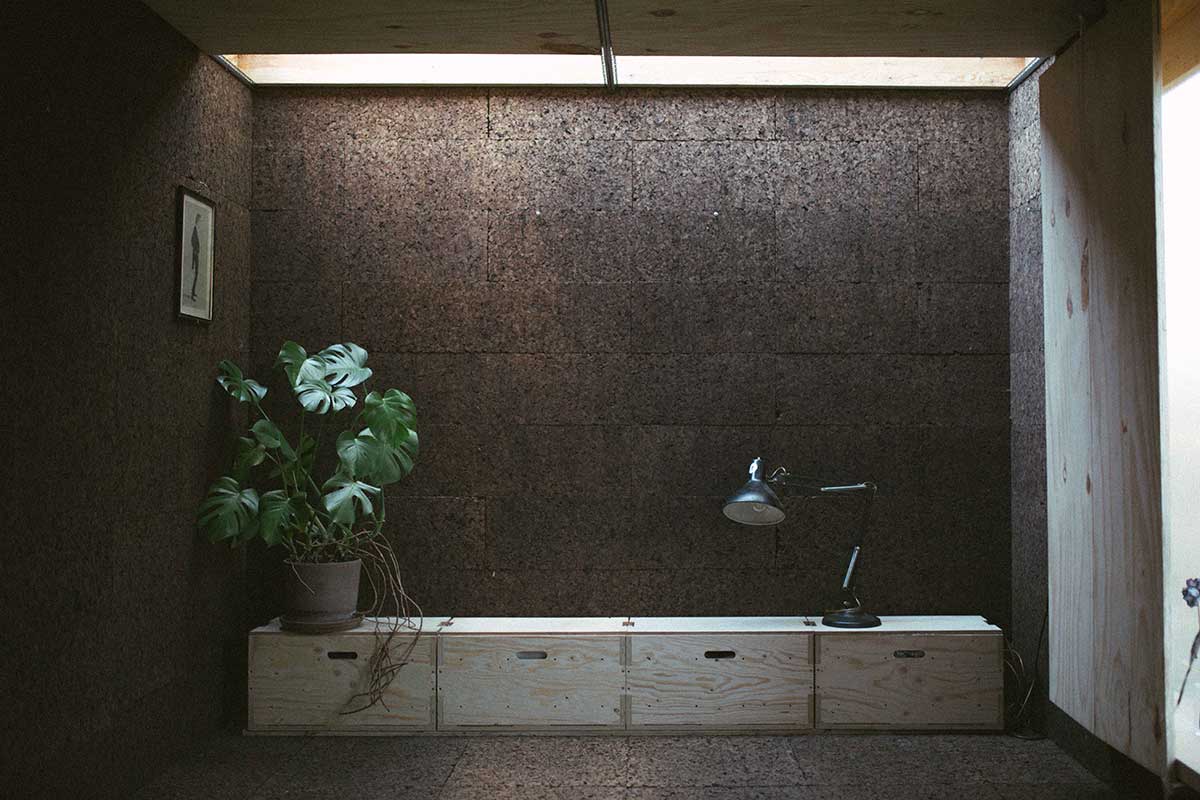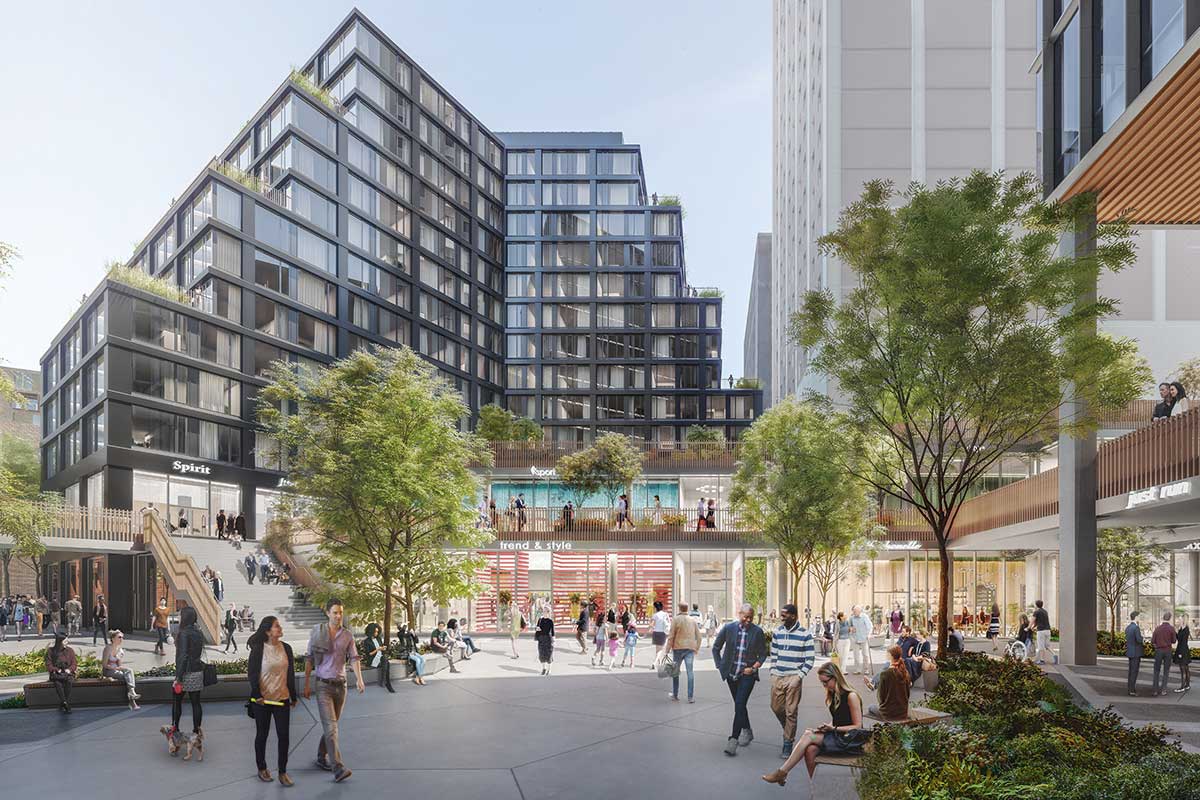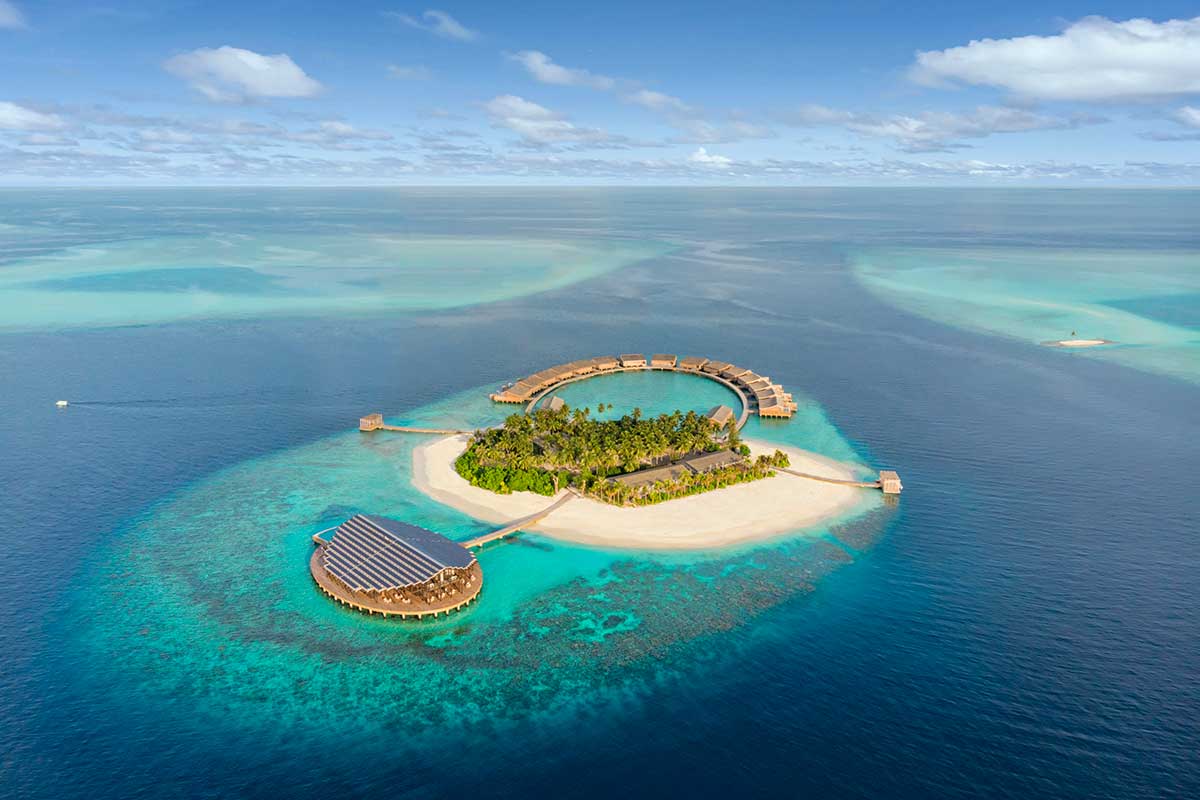
[Courtesy of Studio Bark]
1. Cork Studio
Studio Bark, a London-based architectural firm that focuses on cost-conscious and environment-friendly building, has conducted a real-life experiment to see if the bark from a cork oak tree—commonly known as just “cork”—could be used as the structure for an entire building. Bark from cork oak trees replaces itself every nine years, so using cork to build is a sustainable practice. (Cork blocks are also produced using leftover pieces from wine cork production.) By conducting fire, water, and rot tests, Studio Bark proved that cork is safe and efficient enough that it could be used to construct a small building. About a year in, the building had withstood summer heat and cold-weather storms. studiobark.co.uk

[Courtesy of Monroe Blocks]
2. Monroe Blocks
A two-block stretch in Detroit will be home to an ambitious project, one that will accommodate all three major spaces: home, work, and leisure. The development, dubbed Monroe Blocks, will add 1.4 million square feet of office, retail, residential, and open space and connect Detroit’s downtown districts, while also adding to the ongoing revitalization of the city. Once completed, Monroe Blocks will sit adjacent to Campus Martius Park—the center of the city’s Central Business District. By linking landscape design with urban planning, Monroe Blocks is expected to further Detroit’s rich architectural legacy. The first U.S. project designed by Schmidt Hammer Lassen Architects, the project is targeting LEED certification and will feature Detroit’s first WELL-certified building: the development’s high-rise office tower. monroeblocksdetroit.com

[Courtesy of Kudadoo]
3. Kudadoo Maldives Private Island
A sky view of the Kudadoo Maldives Private Island showcases the resort’s huge photovoltaic solar-panel roof—regularly the first thing people see when flying to the island. The geography of the island and the strategic architecture of the resort, by Yuji Yamazaki Architecture, allow for solar energy to be used to its full potential, making the locale a strong leader when it comes to achieving carbon neutrality in small island nations. The resort also aims to preserve the natural ecosystem of the island. By keeping native plants intact and placing guest accommodations on the sand lagoon away from vegetation, the natural landscape hasn’t been harmed. kudadoo.com
